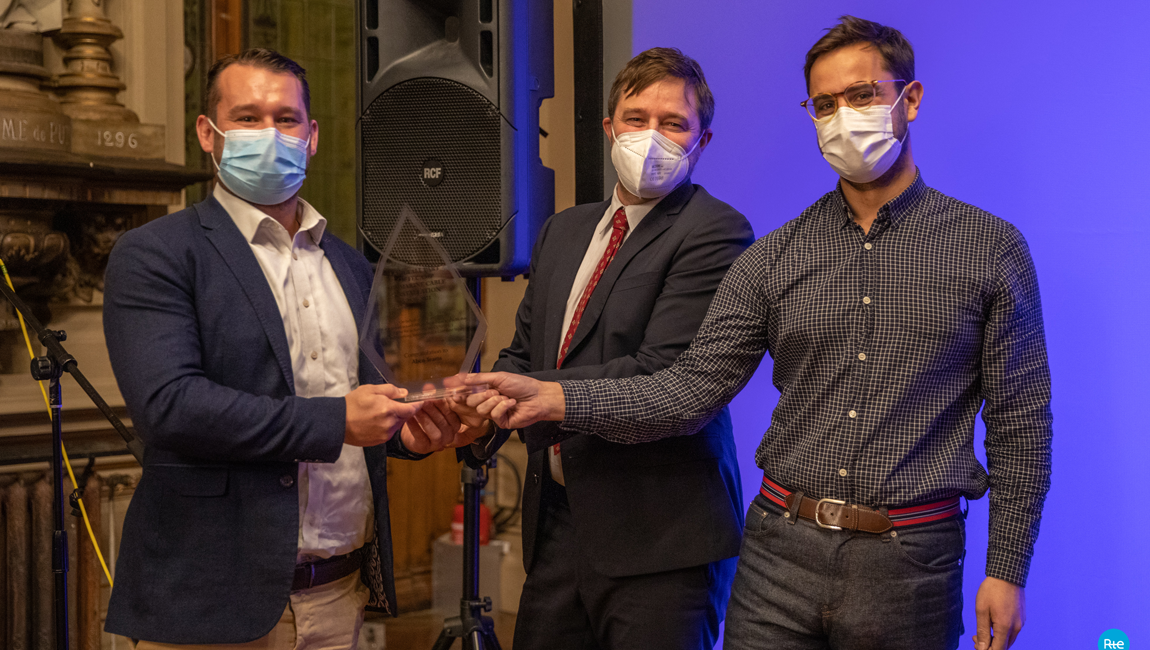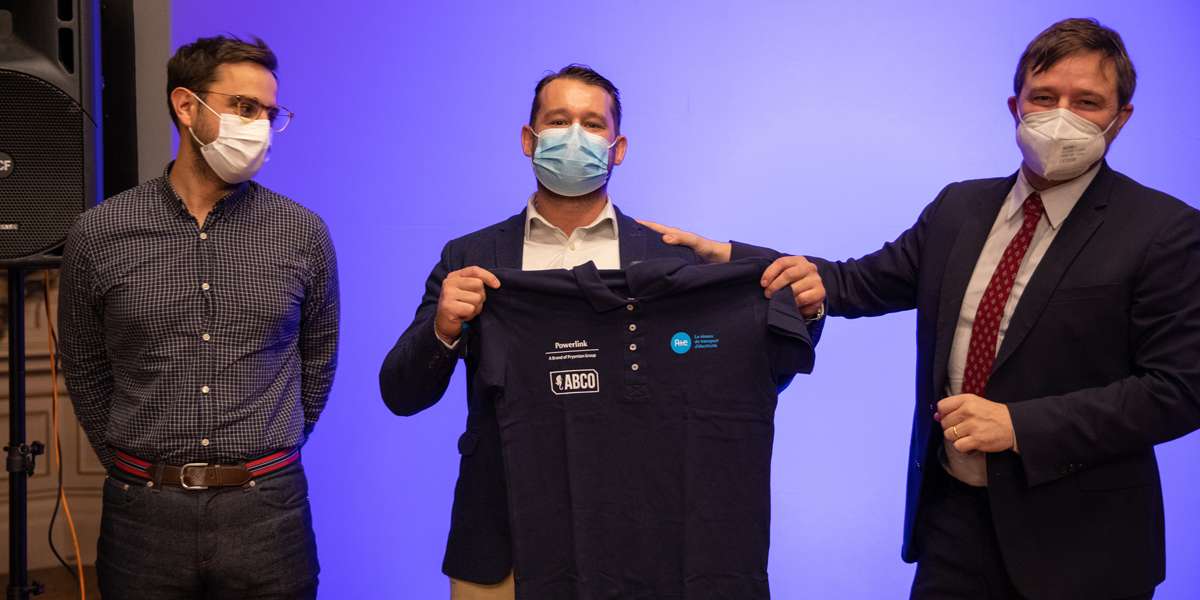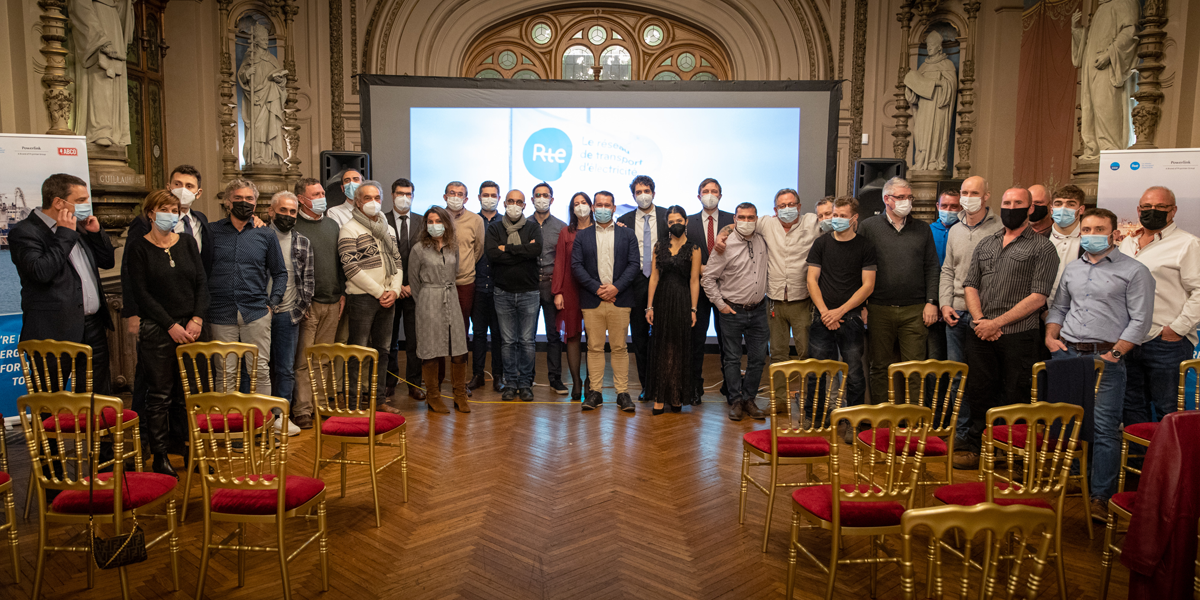Prysmian Group achieves zero injuries in 20 months at Fécamp

A festive group of people from Prysmian Group, client RTE and subcontractor ABCO gathered at the French city of Fécamp’s historic Palais Bénédictine last week for a special dinner to celebrate an important achievement together: zero accidents at the submarine cable installation for one of France’s first large-scale offshore windfarms at almost halfway through the project.
Highlighting HSE results as Prysmian Group moves towards 2030 Social Ambition
It’s not every day that Prysmian highlights the safety record at individual projects and is all the more important because Fécamp is one of three Prysmian Group projects in France kicking off the nation’s first large-scale offshore wind farm infrastructure.
“We have completed the installation of the two export cables with zero Total Recordable Case (TRC) and zero Environmental Incident (EI) which is something you don’t see that often,” said Project Director Giovanni Ghirardelli. “So we decided to take the moment to celebrate showing our gratitude to our supplier and set the HSE goal of 0 injury for the second half project in 2022 with still a lot of challenges to face.”
Giovanni Ghirardelli
Project Director
Occupational health and safety of its staff and subcontractors at worksites is one of the three areas that Prysmian Group and its stakeholders say is important for the company’s sustainable growth. Prysmian Group has set a “zero injury” target as part of its 2030 Social Ambition – which is another reason why the achievement at Fécamp is so exciting. To work towards this “zero injury” goal, Prysmian Group has also set precise safety targets for 2022, and injury rates are included among the ESG criteria linked to the variable remuneration of relevant managers.
Workplace safety is more than “just” about achieving goals and targets. It’s a tangible demonstration of Prysmian Group’s commitment to the communities where it does business. This was especially important at Fécamp, where the Group is a newcomer to the area. The 500 MW Fécamp offshore wind farm is made up of 71 turbines installed between 13 and 22 kilometres off the Normandy coast. Offshore construction on the project is scheduled to start in 2022 and the wind farm is expected to be fully commissioned by the end of 2023.

The Fécamp windfarm is being developed by Eolien Maritime France (a joint venture between the French company EDF Energies Nouvelles and the Canadian company Enbridge). Fécamp is one of three windfarm projects being carried out by Prysmian in France, along with Saint Nazaire and Courseulles-sur-Mer.
Every work site has its own challenges. The formidable, sweeping Normandy cliffs near Fécamp were the site of the Allied landings during World War II, and they draw hundreds of thousands of tourists each year. For Giovanni Ghirardelli and his team, these white cliffs represented an obstacle much as they did during World War II. Because of the cliffs, there were not a lot of suitable approaches to make landfall at the site. The only choice was to install the cable by entering Fécamp’s ancient port. This resulted in considerable safety risks from both the aging infrastructure at the port, and the heavy boat traffic in and out. Clearly, special precautions needed to be made.
“This was a unique experience in terms of projects we have done so far,” said Giovanni, “We had to keep the maritime traffic in mind while working in the navigational channel of the Port, and coordinate our activity in such a way as not to impact the passage of merchant and fishing vessels”.
Giovanni Ghirardelli
Project Director
The key to safety in such a busy environment was close coordination with port authorities and the coast guard, said HSE manager Carlo Riverso. “There was an alternating phase of being able to work or not. This was closely coordinated on a daily basis with the coast guard, and the Port Authority. We became a team – us, the client, the authorities and our supplier. We had to coordinate our schedules well ahead of time.”
Carlo Riverso
HSE manager
Along with health and safety, Carlo Riverso’s challenge was to protect the marine environment of Fécamp, which has been an important fishing center since the 11th century. Fércamp’s fishermen used to travel as far as Canada to net their catch of cod, and the city was France’s main center for salt cod (a popular protein in the days before refrigeration) throughout the 19th century. The Group protected Fécamp’s flora and fauna from damage by installing an environmental monitoring system, he said.

Lastly, cable landfall was adjacent to Fécamp’s beautiful pebbly beach, which has been painted by Monet (s frequent guest at the nearby town of Honfleur). Riverso took special steps to reduce water murkiness in order not to disturb swimming during the holiday season.
Risk evaluation workshops with staff and close field supervision was another key to achieving 20 months without an injury, said Riverso. As Prysmian Group moves forward towards its “zero injury” goal in 2030, their experience will certainly be a “lesson learned.”




